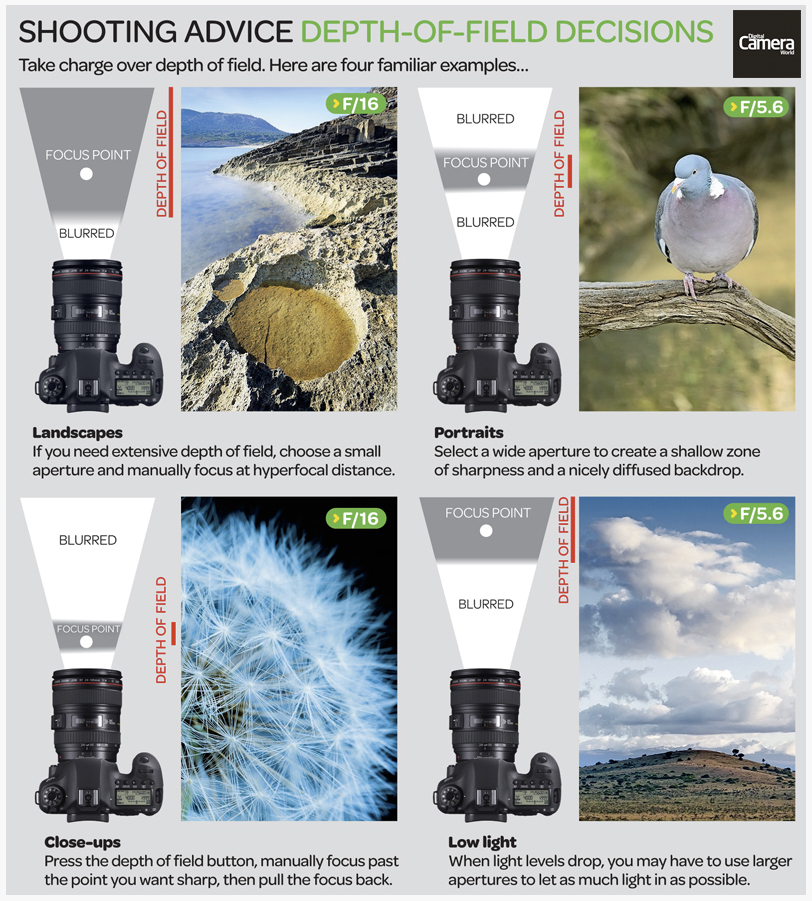Depth of Field - What is it?
Introduction
Plane of Focus
In theory there is only 1 point on a line from the subject through the lens to the digital sensor (or film) that is 'in focus" when it arrives at the sensor. Optical designers talk about "a plane of focus"; every point on that plane is perfectly in focus, everything else is out of focus.
Fortunately, life is never that precise. Points either side of the plane of focus are so close to being in focus that we cannot tell the difference. It all depends on how we view the image, how far away from it we are, and the state of our eye sight. Photographers therefore talk about "acceptable focus" and a zone of acceptable focus, or Depth of Field.
Depth of Field
In the following diagram the photographer has focused on the head of the cat with different camera settings and gets different results.
In the top example the head of the cat is in acceptable focus and everything else is "out of focus". It has a "narrow/small depth of field".
In the bottom example, everything is in acceptable focus from the mountain in the background to the trees in the foreground. There is a large depth of field.
The Depth of Field is determined by several factors:
- The focal length of the lens
- The subject to lens distance
- The size of the aperture of the lens
- (The sensor size)
- Lenses do not perform the same throughout the aperture range; the best performance is likely to be achieved in mid range aperture values. Diffraction starts to be a problem at smaller aperture sizes as different wavelengths (colours) of light are bent by different amounts leading to colour fringing and softening in your image.
- You may "waste" acceptable depth of field behind part of your photo. For example, if you focus on the front of a house the Depth of Field will extend in front and behind the house itself. You cannot see into the house and so have "wasted" potential for part of the scene to be sharp. If you change your point of focus to focus in front of the house you may well improve the focus on foreground items. This is the principle of the Hyperfocal Distance and a technique called hyperfocal focusing.
Hyperfocal Distance
 |
| Example 1 small aperture focused at infinity |
 |
| Example 2, large aperture focused at infinity. |




Comments
Post a Comment